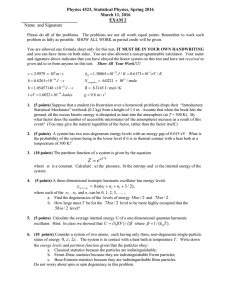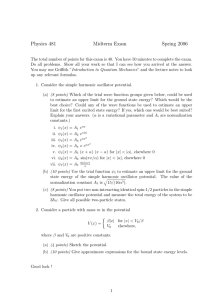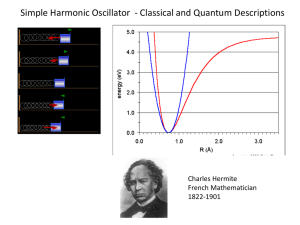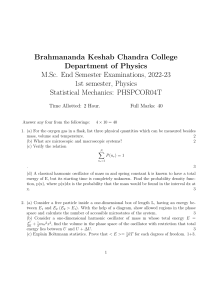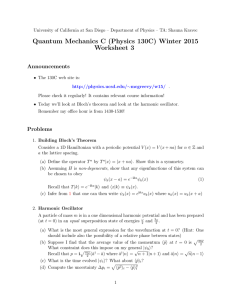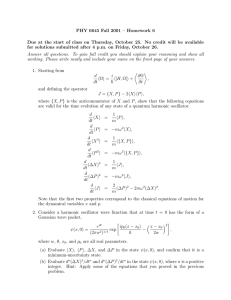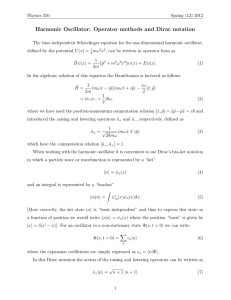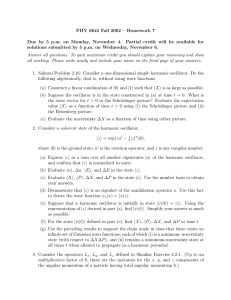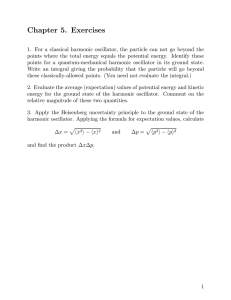PHY 4605 February 17, 2012 Exam #1
advertisement
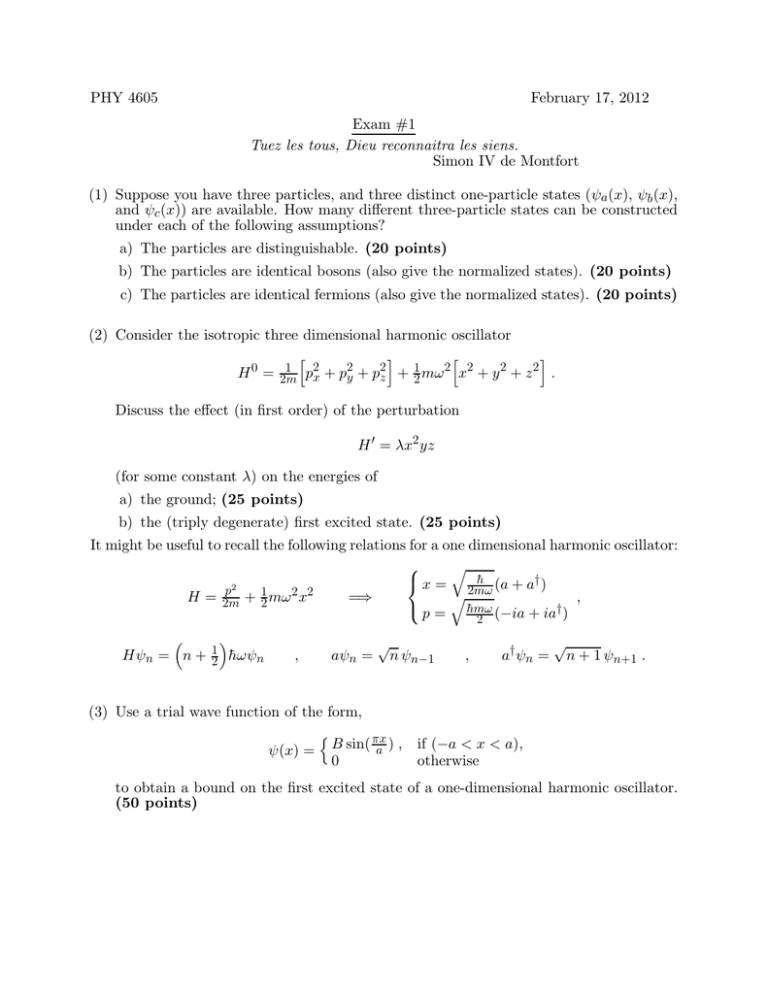
PHY 4605 February 17, 2012 Exam #1 Tuez les tous, Dieu reconnaitra les siens. Simon IV de Montfort (1) Suppose you have three particles, and three distinct one-particle states (ψa (x), ψb (x), and ψc (x)) are available. How many different three-particle states can be constructed under each of the following assumptions? a) The particles are distinguishable. (20 points) b) The particles are identical bosons (also give the normalized states). (20 points) c) The particles are identical fermions (also give the normalized states). (20 points) (2) Consider the isotropic three dimensional harmonic oscillator i i h h 2 2 2 2 2 2 2 0 1 1 H = 2m px + py + pz + 2 mω x + y + z . Discuss the effect (in first order) of the perturbation H ′ = λx2 yz (for some constant λ) on the energies of a) the ground; (25 points) b) the (triply degenerate) first excited state. (25 points) It might be useful to recall the following relations for a one dimensional harmonic oscillator: q h̄ (a + a† ) x = 2mω p2 q H = 2m , + 21 mω 2 x2 =⇒ p = h̄mω (−ia + ia† ) 2 Hψn = n + 21 h̄ωψn , aψn = √ n ψn−1 , a † ψn = √ n + 1 ψn+1 . (3) Use a trial wave function of the form, n πx ψ(x) = B sin( a ) , if (−a < x < a), 0 otherwise to obtain a bound on the first excited state of a one-dimensional harmonic oscillator. (50 points)

